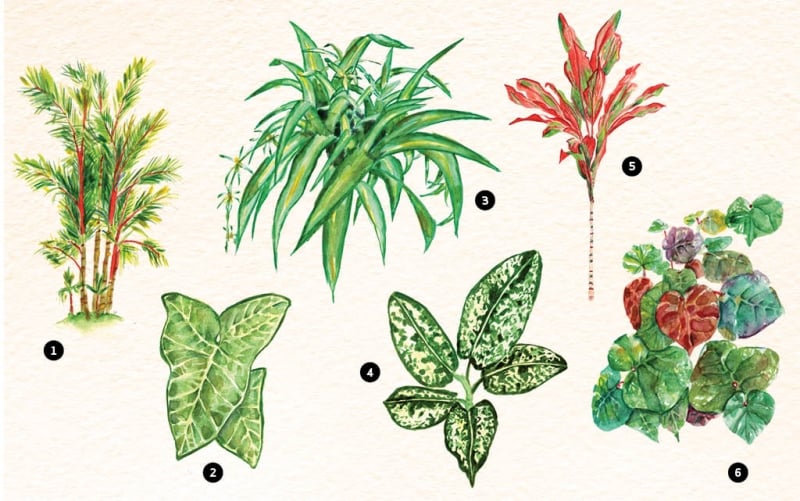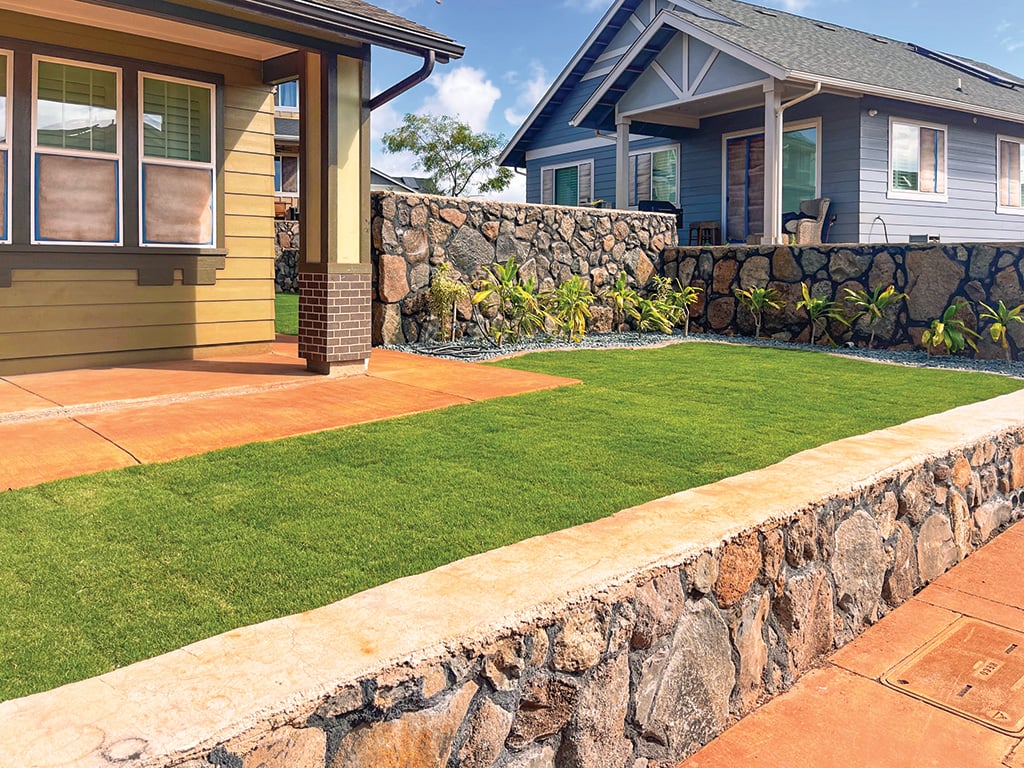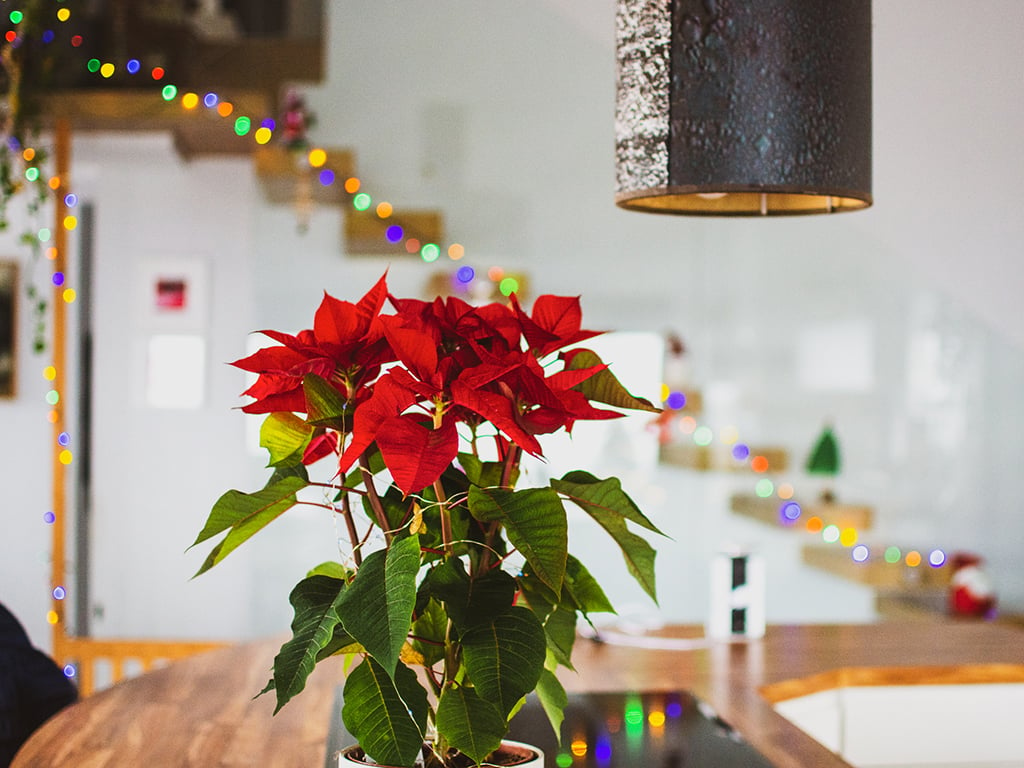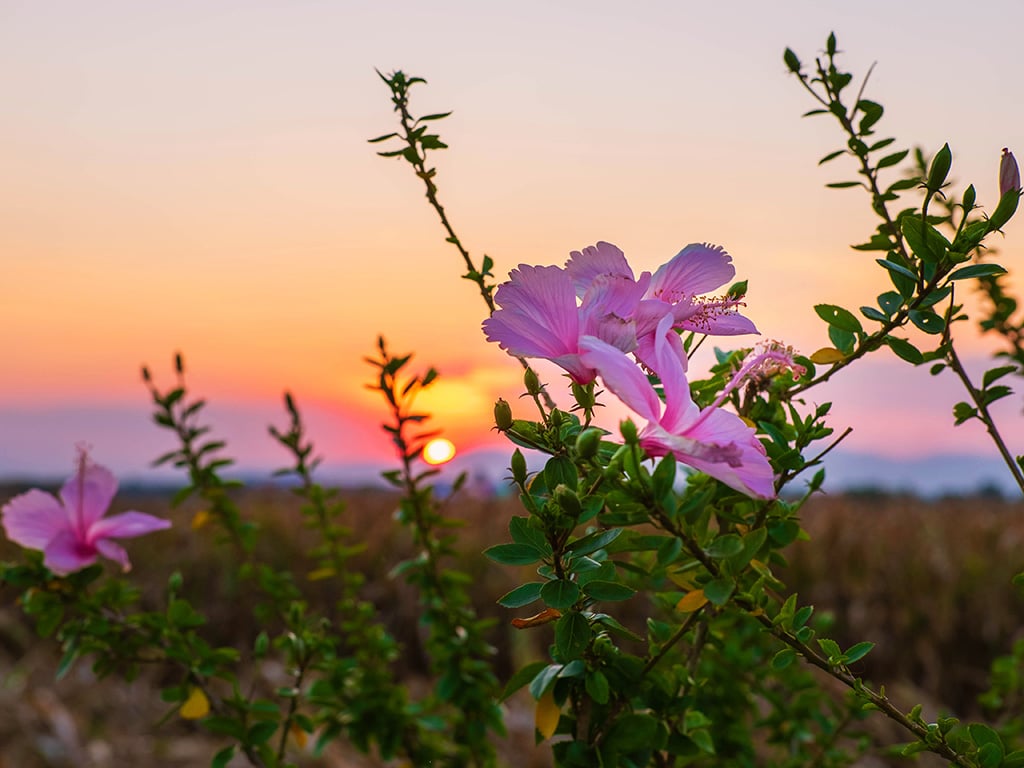Leafy Greens
Beautiful foliage you’ll want at home.

Need more greens in your living spaces? Get your fix with these suggestions to help you get started. Plus, we have tips to make sure they thrive.
1. Red Sealing Wax Palm
Needs: Keep it sheltered with minimal sunlight and lots of water.
“With different varieties of palm trees, you can get different leaf shapes and color,” says Steve Dewald of Steve’s Gardening Service. The red sealing wax palm has a bright red color that adds a punch of vibrancy to any home.
2. Syngonium
Needs: Bright surrounding light, minimal water but keep the soil damp.
A good indoor plant, the syngonium’s stem develops its own root system. Some trimming is needed that can either be thrown away or used to repot to grow another plant.
3. Spider Plant
Needs: Sufficient lighting, minimal water but keep the soil damp.
“Most people grow it indoors, either in a pot or a hanging basket,” says Gary Chagami of City Mill. The taller a spider plant grows, the more its leaves spread out. Its long leaves eventually develop its own root system, so you can trim a piece and plant new ones.
4. Dieffenbachia
Needs: Sufficient lighting, minimal water but keep the soil damp.
Just like most indoor plants, the dieffenbachia grows well in a room with good air circulation. It’s a sturdy plant that grows upwards with bulbish roots that can be separated into two different plants. “Usually people do that when they notice the pot is getting too small for the plant, so they’ll either go to a bigger pot or divide it into two or three different plants,” says Chagami.
5. Ti Leaf
Needs: Moderate to full sunlight and minimal water.
Sure, you may be familiar with the ti leaf, but did you know that there are many color options besides green? “There are hundreds of varieties of ti leaves, things you’ve never heard of that are absolutely gorgeous,” says Dewald. The diverse looks are great for complementing existing colors in your yard or easily adding accent colors.
6. Variegated Hau
Needs: Minimal water, requires pruning.
“It’s a pretty, colorful plant,” says Dewald. Unlike a lot of foliage plants that are primarily green, the variegated hau has pinks and whites in its leaves. This plant can be grown into a shrub or even a tree.
Let Your Plants Thrive
1. Know what grows where.
If you live near the ocean, you can’t expect a plant that thrives in mauka conditions to grow well. “Look at where [you] live and do some homework before to make sure [your] environment is suited for that plant,” says Dewald.
2. Do a monthly check-up.
“Make it a habit to inspect the foliage — the top and underside of the leaves — once a month or so to check to see if you find signs of insects present,” says Chagami. This way, you can take care of the insect problem right away by simply wiping them off so that insecticides aren’t needed down the road.
3. Ask for expert help.
If you notice signs of sickness or a change in appearance, snip off a sample, place it in a bag and take back to the store for advice.






